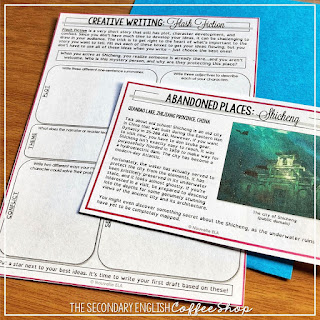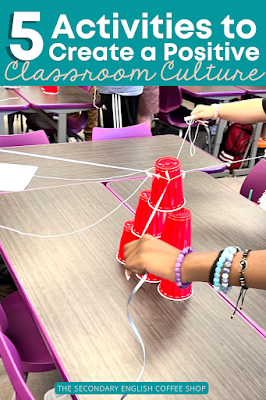If your students are anything like the ones I teach, they struggle to make deep and meaningful connections to the text. They can all find a superficial link to a character, theme, event, or plot, but it's often surface-level. For instance, writing that they have had a crush on someone is hardly a deep text-to- self connection to Romeo & Juliet. Or that they too have connected with a character because they have both experienced sadness is not exactly what we are looking for at the middle-high school level.
Model the Strategy
I often read aloud to my classes (even my seniors), and if I am working on deepening connections, I will stop and explain my connection to the text as I read. I show students how I look for and find connections in any text - it could be a novel, short story, or non-fiction article. I would only do this with a text I'm familiar with and have pre-read so that I have time to figure out where I'm going to stop and what I'm going to say. As I read, I model my thinking out loud and give deeper detailed connections rather than surface-level connections.
I emphasize to students that we all have different experiences and different backgrounds, so naturally, our connections will all be personal, and all be different. I want students to know there is no right or wrong way to connect with the text. My hope is that they can find something in the text to relate to and that they can explain it with some detail and evidence of deeper thinking.
Visual Aids
I use text connections posters in my classroom to remind students of what they should be looking for as they read. My posters provide not only the meaning of each text connection but also questions to ask themselves as they read and a series of sentence starters to use in their response. I love seeing students look at them as they work through a novel study, short story, or non-fiction article. Check out my resource here - it also includes a student reference sheet, graphic organizer, and four types of bookmarks!
Bookmarks & Sticky Notes
I encourage students to use sticky notes and bookmarks to keep track of connections as they read. I stock up on sticky notes from the dollar store and have had students use different coloured sticky notes for each type of text connection.
I also give students a text connection bookmark to remind them of what they are looking for as they read. Grab a FREE set of bookmarks HERE!!
Find Articles, Short Stories, Movies, and Videos
I think it is important to help students find connections, especially text-to-text and text-to-world connections. Wherever I can, I find articles, poems, videos, and other media that may link to a text we are reading. For example, if we are reading Romeo & Juliet, I will find articles that link to child marriage, family feuds, or arranged marriages. For more modern books it can be easier to find articles related to world or local events that may be similar to the themes in the book you are reading. So many modern young adult texts deal with present day issues such as racism, homophobia, sexism, and other tough topics... the more I can relate these topics and connect them to our community, and their lives, the better they will understand their importance.
Looking for more ideas?
Check out the following resources from the ladies of the Secondary English Coffee Shop.
Reading Connections Foldable - The Classroom Sparrow
Making Text to Text Connections Blog Post - Room 213
5 Ways to Analyze Non-Fiction & Rhetoric Blog Post - The Daring English Teacher
Happy Teaching
Addie














.jpg)

.png)











